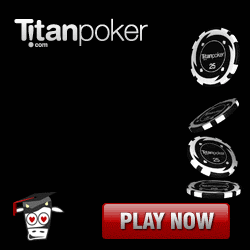Strategy: Seat Selection in 6max
Dec. 28, 2011, Posted by Alex
Such is the state of online 6max cash poker that now even the low-limit grinders put serious effort into understanding good table selection, yet seat selection oddly gets relatively fewer press.
Seat selection is nothing of a new concept, Miko Caro was one of the 1st to put pen to paper with regards his thoughts on the clockwise movement of money and since then there has been a huge amount of literature on optimal pre-preflop play. This article is about some thoughts I have on table selection at the magnified level, specifically selecting the seat from which you will make your decisions.
Pre-preflop play is like any other skill in poker, like handreading or valuebetting. The beauty of learning good seat selection is that it’s a relatively fast and easy skill to learn and it gives you an edge over other regulars. For whatever reason, a big proportion of regulars at all but the highest stakes do not put any/enough effort into seat selection, multitablers (6+) can perhaps be somewhat excused but if you are playing optimal poker (1-4 tables) then there is simply no excuse for not table selecting properly and especially seat selecting well, by not you are simply being lazy.
Basic seat selection comes down to the breakdown of the fundamental rule of poker. You profit from other players mistakes. When we are in position, their mistakes are amplified (either on their own accord or by us effectively using position, to bluffraise a high cbet% for example) and more regular. The primary goal of good seat selection is to make your life (as a status quo solid TAG) as easy and as profitable as possible. This generally means having fish to your right and tight players on your left. If you can find the right seat it enables you to play a lot of hands in position against bad players, open a lot of pots in order to abuse position/skill advantage later and generally play well. Tight players on your left make it easy to play poker. They wont get in your way, don’t know how to abuse your position and play faceup, which makes life easy.
As we delve a little deeper, basic seat selection comes down to identifying an asset, usually a very loose passive player or a super loose aggressive player and managing to get the seat to his direct left or two to his left (the Jesus seat and Thomas chair respectively- in reference to Jesus’s seat in relation to the villain Judas (I think, well, like to think) at the last supper (and no Mary was added in after Da Vinci code buffs). In the Jesus seat you get to play a whopping 5/6 hands in position against the mark, which is fantastic because as we know, the vast majority of poker winnings comes from getting involved in pots with fish, in position! The further away you are from the mark, the less the table is worth to you overall, generally speaking(so being opposite the table would mean you are involved in the fewest pots with said asset and consequently PROBABLY the worst seat).
The problem with basic seat selection is that times have changed somewhat in recent years. The games are generally much tougher with fewer and fewer whales and many more good aggressive players. How does this impact on our seat selection strategy?
Relative positions and table makeup are far more important now than say 3 years ago.
Let me give you two examples of how relative position matters depending on table makeup. On the first table you have immediate position on a loose aggressive fish 100bb (say 60/35) deep and you cover, but a good LAG is to your immediate left and is playing very aggro (35/25//10%3bet). On the second table you are to the direct right of a very loose passive calling station type player (40/3) and the rest of the table is madeup of very tight abc inline regulars. Which is the better table? The second table is much better despite the fact that you are out of position. On the first table our relative position in the middle of a LAGfish and a goodLAG means that we will get in a lot of high-variance spots, as we will be unable to isolate the fish wide by raising and cannot call in position. The reason for this is that a good lag will recognise our attempts at isolation and will cold 4bet and squeeze a chunk, making it difficult for us to see flops in position against a fish (FWIW you should have a word with regs that regularly squeeze fish out of the pot preflop, remind them that the bulk of the money goes in postflop not preflop with these guys and they need to let them in, obviously reg v reg its standard). The second table is much more profitable due to the specific assets weaknesses, they call too much. When a player is a station, position matters far less, as they will generally let us know when we are beat, let us bluff them off pots, not know how to abuse position and let us manipulate the pot size on our terms not theirs even out of position. Possibly the only downside is we will value-cut ourselves with the worst hand a fair bit as they don’t know how to maximise value, but that’s the only disadvantage I can think of. If the player is a good asset, willing to put in decent amounts of money postflop, then you should choose the second. Bear in mind all fish are not alike and there are many that have terrible preflop stats but ok/winning postflop stats. Given that far more money goes in postflop than preflop you want to make sure you are sitting with fish that like calling down the streets with bad hands. . Look at how this table doesn’t become nearly as profitable if on the second table the player is a loose aggressive fish. This player will use their position and aggression far more optimally and by playing aggressive poker will be playing better from the outset.
We can also use other types of player in our seat selection. At tougher limits, we can endeavour to keep tight nittier players to our left, who wont abuse their position and take as much money off us. These should also be considered an asset. Important too is the fact that position becomes more important as stack sizes increase, we would generally always want fullstacks to our right (which are +EV for us) and shortstacks to our left (less –EV for us). Your ideal table would be a mix of loose passive and loose aggressive fish in the 3 seats to your right and a couple of too-tight shortstackers to your left. Try to manipulate your seat depending on table makeup. I there are couple of squeeze monkeys to your left, overlimp bigger hands pre and isolate with a tigher range preflop. As you reach tables without any obvious fish (getting more and more regular now) try to keep the aggressive players to your right and the passive players to your left (POLAOR) and keep the tight on the left and the loose on the right (TOLLOR). Remember that as stacks get deeper position is vital, be proactive and move seats if need be, you can massively boost your winrate by playing well deep in position in bloated pots versus bad players.
Identifying marks:- (possible boxout?) All fish are not the same, identify the cream of the crop for your buddylist. Players playing 1 or 2 tables are usually fish. High VPIP tables are usually good tables. Table selection tools suchb as “Spadeeye” allow you to score players and markup tables, but if you can put the effort in, manually looking at tables for a while before playing is still very valueable).
Conclusion
Seat selection is a skill that lets you gain or accentuate an edge. In the online poker world it is pretty hard to have an edge all the time at all your tables. Constantly be looking for the very best tables, across multiple sites if need be. Change seats, only take seats at good tables if they are valuable and be on the lookout for opportunities to move to better seats. I see so many regulars facing up to each other day in day out, perhaps with one or two slight favourites over the rest. On these tables, generally there is only 1 winner in the longterm, the house. Be picky, cherrypick the very best seats on offer, taking into account the position of everyone, from the superaggressive shortstack two to your left (big negative) to the drunk idiot two to your right who is opening 100% of pots preflop with a 500bb stack. Seat selection as part of a more intricate weave of poker skills, is complimentary, forcing your winrate up and galvanising it to be more sustainable. Don’t be lazy, like everything, you get out what you put in.




